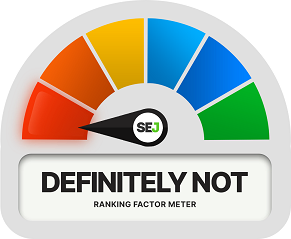Google has confirmed its algorithms contain signals that align toward ranking websites that express qualities represented by E-E-A-T (Experience, Expertise, Authoritativeness, and Trustworthiness).
This article is focused on the topic of E-E-A-T in the context of ranking factors. For a deeper dive on E-E-A-T context, please read: What is Google E-E-A-T? How To Demonstrate First-Hand Experience.
That makes it critical to understand E-E-A-T in order to improve website search presence.
But does that mean that E-E-A-T should be regarded as actual ranking factors?
[Recommended Read] → Ranking Factors: Systems, Signals, and Page Experience
The Origin Of E-E-A-T
Google uses search quality raters to evaluate changes in the algorithms, as manifested in sample search results.
Their job is to provide feedback based on the quality of the websites ranked.
The quality rating process is strictly for evaluating the algorithm, not for evaluating actual live search results.
The role of the guidelines is to make the work of each quality rater consistent.
So, rather than relying on the subjective judgment of each rater, which can be influenced by personal experience or feelings, the judging is made with consistent benchmarks.
One of the benchmarks recommended in the Search Quality Raters Guidelines is E-E-A-T.
Google has also recommended that publishers and search marketers use E-E-A-T as a standard for judging the quality of their websites.
E-E-A-T are qualities that Google’s algorithms are tuned to identify in content as part of the ranking process.
E-E-A-T And Signals Used To Rank Content
Have you ever noticed that Googlers tend to talk about signals more often than ranking factors?
People ask Googlers about ranking factors, and they nearly always turn around and talk about signals.
Google’s explainer of how Search works even makes a distinction between factors and signals.
It states:
“Search algorithms look at many factors and signals…”
Google consistently advises about the “signals” that correlate with the concepts of E-E-A-T.
This is something to consider when figuring out how E-E-A-T fits into your SEO strategy.
Rather than focus on links or any other on-page features to game the algorithm, it may be more useful to think about how users perceive your content in terms of experience, expertise, authoritativeness, and trust.
See also: E-E-A-T’s Google Ranking Influence Decoded
Our Verdict: E-E-A-T Is Definitely Not A Ranking Factor

But it’s a description of what you should aspire to if you want to rank highly.
Sometime during the past 20 years, Google has transitioned to talking about signals as well as factors.
I’m not sure that it’s using both words interchangeably.
This carries over to E-E-A-T.
Google has advised:
“….we have been occasionally asked if E-A-T is a ranking factor.
Our automated systems use a mix of many different signals to rank great content.
We’ve tried to make this mix align what human beings would agree is great content as they would assess it according to E-A-T criteria.
Given this, assessing your own content in terms of E-A-T criteria may help align it conceptually with the different signals that our automated systems use to rank content.”
So, is E-E-A-T a collection of ranking factors? No, Google is clear on that point.
The concept of E-E-A-T aligns with the kinds of sites that Google’s algorithm aspires to rank.
Featured Image: Paulo Bobita/Search Engine Journal





